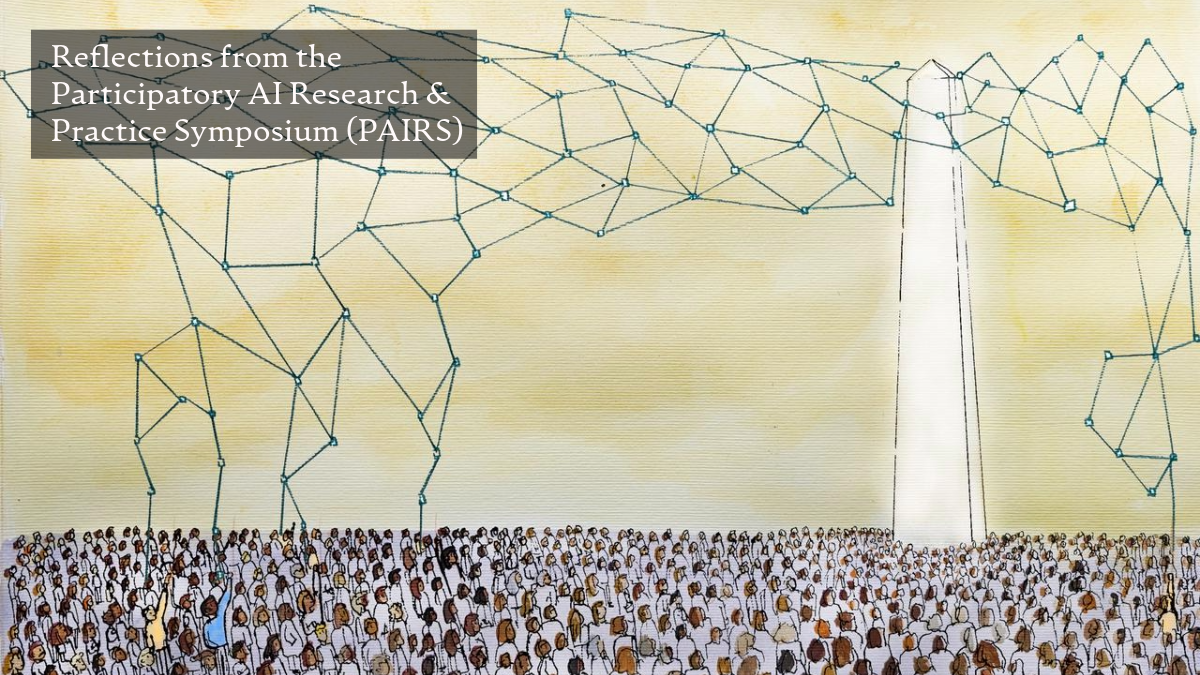Let's Master AI Together!
Participatory AI: Forging Shared Frameworks for Action
Written by: Chris Porter / AIwithChris

Image source: https://cdn.sanity.io/images/3tzzh18d/production/d764db51a847914dcd83deef94d0ac1939e55042-1200x675.png
The Rise of Participatory AI
Artificial Intelligence (AI) continues to spread throughout various sectors, transforming the way we work, interact, and live. However, as we increasingly rely on these technologies, it is crucial to embed public voices into the development and governance of AI. The notion of participatory AI advocates for an inclusive structure where diverse voices contribute to the decision-making processes that shape AI technologies. Recently, this dialogue gained significant traction with the launch of the $400 million Current AI Fund at the Paris AI Action Summit. This initiative emphasizes how public engagement can influence AI development and ensure adherence to public interest.
The Current AI Fund marks a transformative step toward embedding democratic principles in AI governance. It has spurred discussions around the urgency of creating frameworks that genuinely involve the public in the design, implementation, and monitoring of AI systems. While the concept of participatory AI isn’t new, the challenge remains in ensuring it doesn’t devolve into tokenism or depoliticization. To safeguard against this, stakeholders must clarify which aspects are being governed, the purpose of governance, and ensure that public input results in tangible impacts on AI projects.
The Role of Public Engagement in AI
Public engagement in AI development is not just about gathering feedback; it’s about integrating the voices of those who are often underserved. Decision-making processes influenced by diverse opinions lead to more ethical, accountable, and socially beneficial technologies. Effective participatory frameworks can facilitate collaboration amongst various stakeholders, including citizens, policymakers, technologists, and industry representatives.
One noteworthy observation is that existing participatory approaches frequently come across as superficial. Many organizations implement engagement strategies that appear democratic but lack the necessary depth to ensure effective public influence. This calls for a nuanced understanding of what true participation involves, focusing on continuous engagement rather than sporadic feedback events. By weaving diverse inputs into the core of AI governance, we can create technologies that reflect the values and needs of the community.
Frameworks Supporting Participatory AI
The introduction of specific frameworks can fundamentally alter the landscape of participatory AI. For instance, the AI Issue Association model and the digital self-determination framework provide robust guiding principles for developing inclusive AI systems. These frameworks emphasize the importance of co-creation—ensuring that stakeholders are not just passive informants but active collaborators in the process.
The AI Issue Association framework encourages shared ownership of AI technology, enabling diverse communities to co-create solutions that cater specifically to their context. In contrast, the digital self-determination framework advocates for individual and collective rights in the digital realm, reinforcing the notion that communities should decide how technology impacts their lives.
Through these frameworks, stakeholders can navigate the complex dynamics of power that often arise in AI governance. By establishing clear agreements regarding participation, transparency, and accountability, it’s possible to ensure that AI development does not favor specific interests at the expense of the public good.
Conclusion
Participatory AI has the potential to shape technology in ways that resonate with the needs of a diverse public. By forging shared frameworks for action, we can create a more inclusive, equitable, and accountable AI landscape. The need for genuine public participation is becoming increasingly recognized, and as more initiatives like the Current AI Fund gain momentum, it’s essential to keep pushing for frameworks that enable authentic engagement and empowerment.
The Challenge of Implementation
Despite the momentum gained, the practical challenges of implementing participatory frameworks in AI governance must not be underestimated. While discussions about participation are increasingly common, translating these ideals into actionable practices requires a profound shift in approach. Currently, many organizations still adopt top-down decision-making models that marginalize public input. To reverse this trend, a concerted effort is needed to embed participatory methods into the organizational culture that influences AI development.
Furthermore, engaging diverse publics in decision-making means recognizing and addressing the barriers that prevent effective participation. This includes tackling issues of accessibility, representation, and equity. For various communities, especially those traditionally underrepresented in tech discussions, the road to meaningful engagement can be fraught with obstacles. Tailoring approaches to ensure inclusivity is fundamental, which may involve using alternative communication methods, providing resources for participation, and ensuring that everyone has the capability and opportunity to voice their needs and concerns.
A Call for Responsible Governance
Integrating participatory methods into AI governance also raises questions about accountability. Making sure that public inputs lead to actionable insights is one of the essential responsibilities of organizations involved in AI development. Establishing clear accountability mechanisms, such as feedback loops where communities can track how their input is influencing AI outcomes, fosters trust and reinforces the importance of collaboration.
Moreover, responsible governance should also consider the long-term impact of AI technologies on various communities. As AI continues to evolve, it is paramount to assess who benefits from these systems and how to mitigate negative outcomes. Ethical considerations must intertwine with the participatory process to create technologies that advance society without exacerbating inequalities.
Towards a Collaborative Future
The future of AI holds immense possibilities, but realizing its full potential requires collaboration. By emphasizing shared frameworks for action, stakeholders can actively work towards an AI ecosystem that prioritizes the public’s voice while fostering innovation. By listening to various perspectives, it’s possible to develop AI applications that align with societal values and address pressing challenges.
As we look ahead, embedding participatory AI into the fabric of technology will create a more equitable society. It’s essential to continue pushing for frameworks that focus on collaborative solutions, enabling communities to wield influence and shape the technologies that impact their lives. To thrive in this future, fostering an inclusive environment will be key in navigating the complexities of AI governance.
Conclusion
Participatory AI, driven by shared frameworks for action, has the potential to revolutionize how technology serves the public interest. As we work towards more inclusive and responsible approaches, the dialogue must continue to evolve. By championing genuine involvement and meaningful collaboration, we can forge a path towards a democratic AI landscape that represents all voices. To stay updated on the journey of participatory AI and learn more, visit AIwithChris.com and explore the resources available!
_edited.png)
🔥 Ready to dive into AI and automation? Start learning today at AIwithChris.com! 🚀Join my community for FREE and get access to exclusive AI tools and learning modules – let's unlock the power of AI together!
